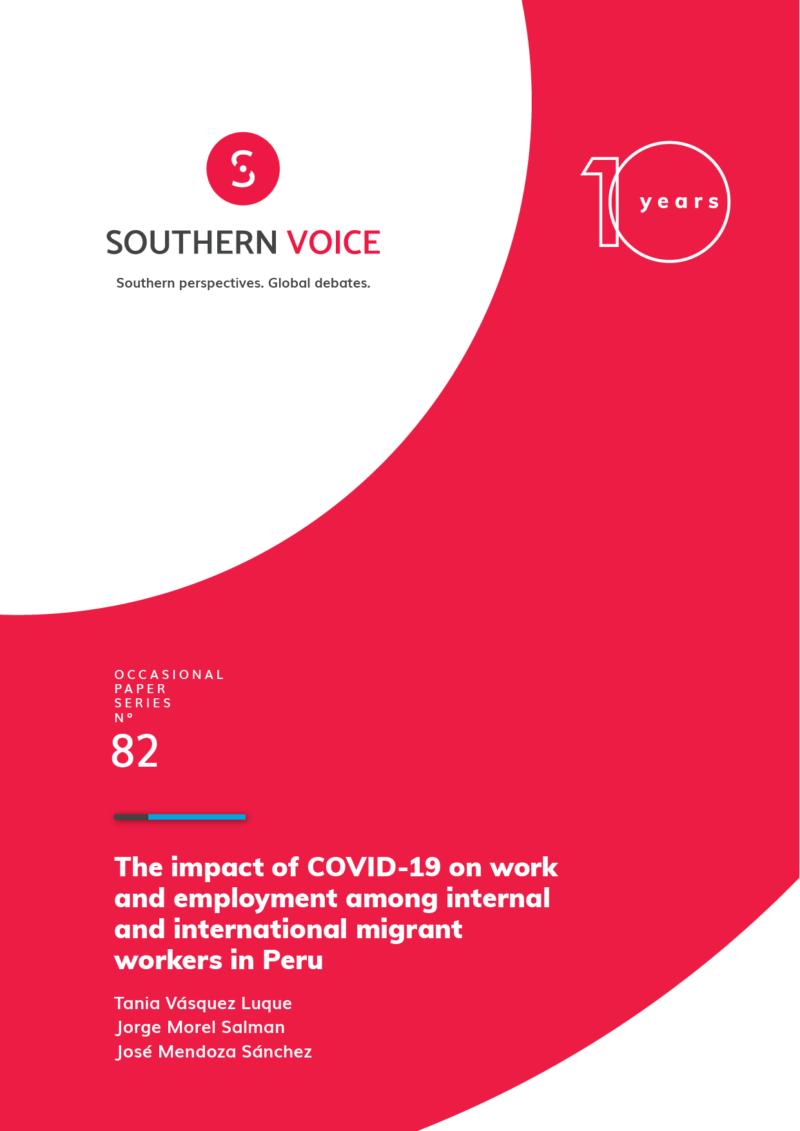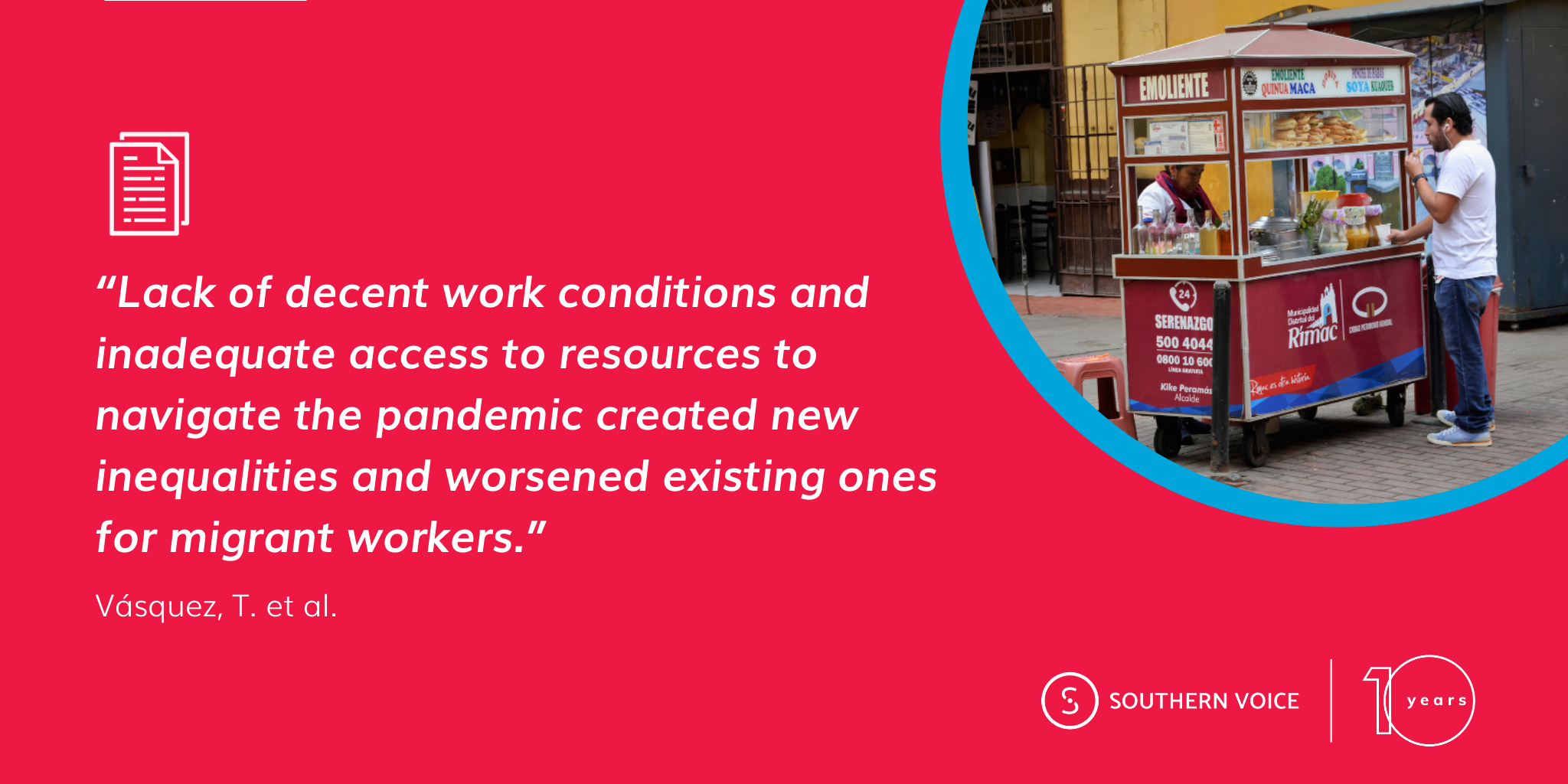COVID-19 forces us to think about the future, and what we do today to create it.

The impact of COVID-19 on Peru’s inequalities is a unique case. The resultant loss of human life and economic recession triggered the internal mobility of Peru’s citizens towards rural areas.
The study used a mixed-methods approach to address the consequences of COVID-19 in this challenging setting, identifying both territorial and individual factors associated with the country’s internal and international migration trends. The study suggests no quantitative change in labour conditions for international and internal migrant workers since 2020 but does indicate slightly decreased salaries compared with the rest of the population. However, according to qualitative findings, working conditions have declined for both migrant types (internal and international) because of increased working hours and less available income. Structural vulnerability in Peru’s labour markets, associated with informality, lack of social protection, and gender-related constraints for women, have impacted both types of migrants, although in different ways.


